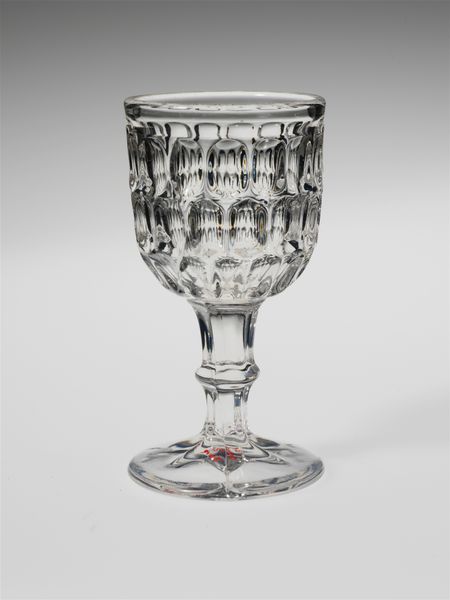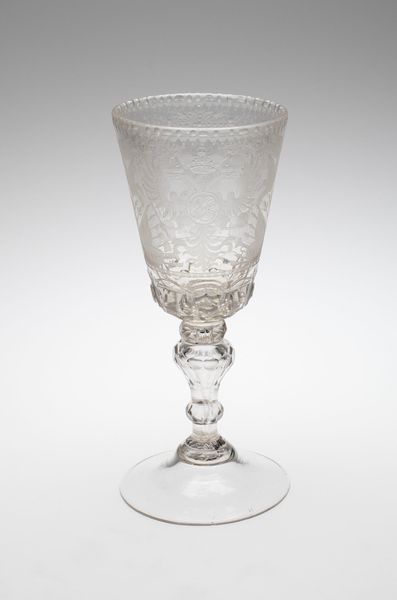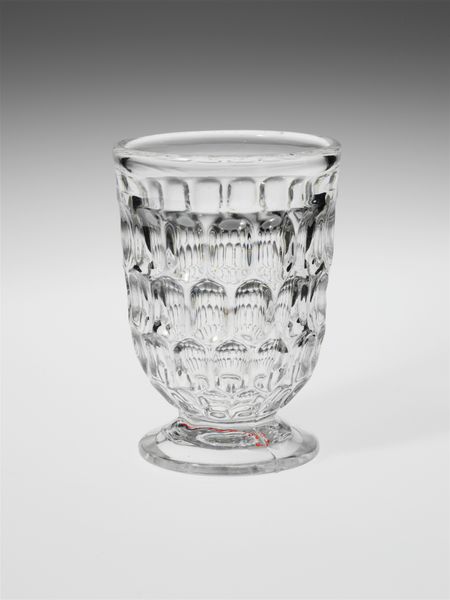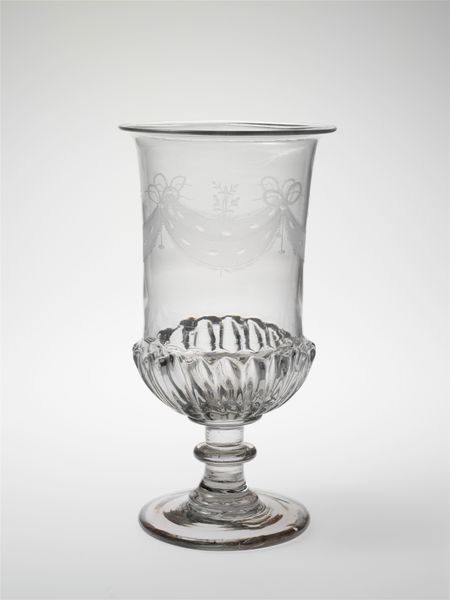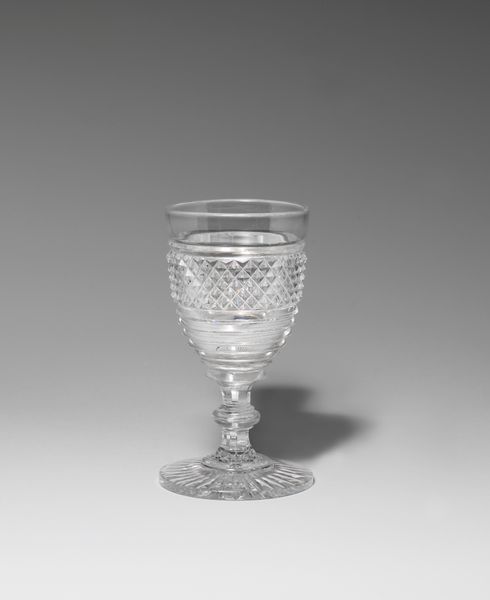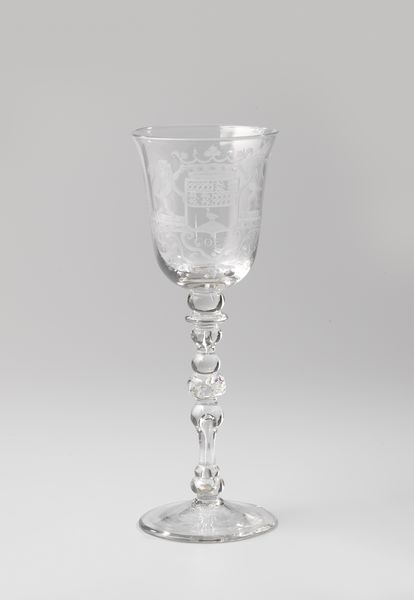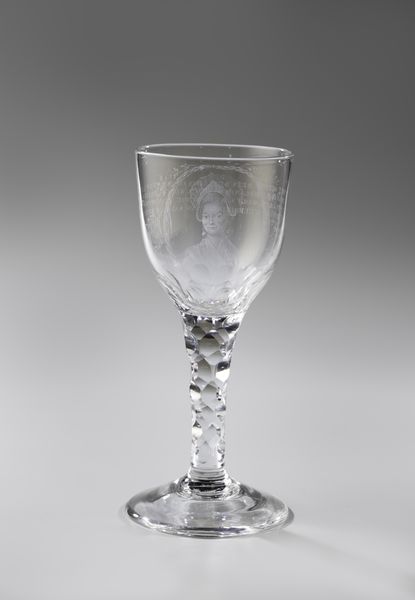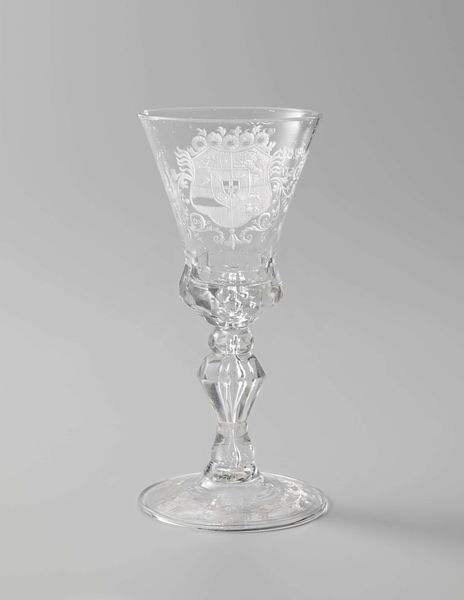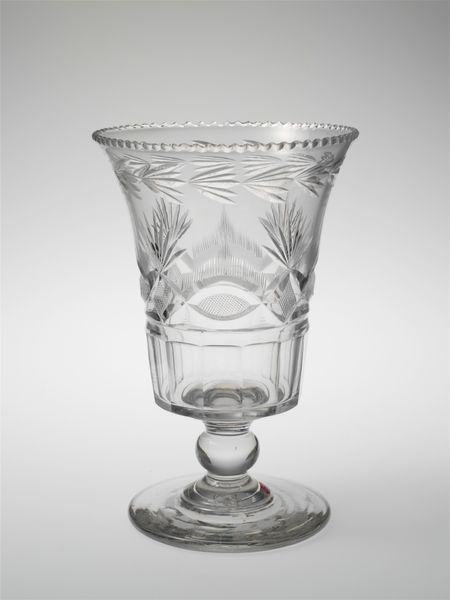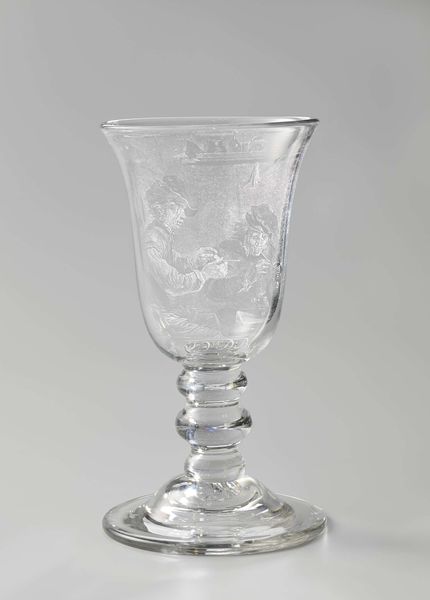
photography, glass
#
photography
#
glass
#
geometric
Dimensions: H. 5 1/16 in. (12.9 cm)
Copyright: Public Domain
Editor: So, this is a photograph of a glass champagne flute made by Bakewell, Pears and Company between 1850 and 1870. The detail in the glasswork is extraordinary. What catches your attention in this piece? Curator: Well, it is more than just a drinking vessel; it’s a cultural artifact. Who was drinking champagne at this time and what did that signify? I mean, consider the mid-19th century – industrialization was booming, but so was social inequality. The elaborate design suggests a level of luxury accessible to a select few, doesn't it? Editor: It definitely does. It makes me think about the Gilded Age and the disparity in wealth. Does the geometric design hold significance beyond mere aesthetics? Curator: Absolutely. Geometric patterns often symbolize order and control. During this period, these designs were used to project an image of refinement. Who was attempting to craft that image, and who did it exclude? Consider gender too – what roles were women playing during that time in maintaining that level of luxury and domestic spectacle? Editor: I never thought about it that way. So the glass is more than just an object, it’s evidence of a societal power structure? Curator: Precisely. It is a looking glass—if you pardon the pun—into a very specific moment of history. It reminds us to consider the labor, class dynamics, and cultural values embedded within even the most seemingly innocuous items. Editor: That's a really interesting way to look at it. Thanks for pointing out all of that! Curator: Of course. And thank you for framing such insightful questions. These everyday objects, when viewed critically, tell us so much about how society operated.
Comments
No comments
Be the first to comment and join the conversation on the ultimate creative platform.

